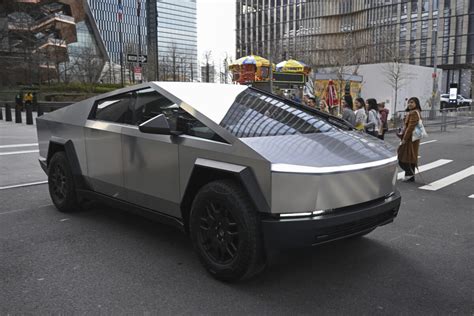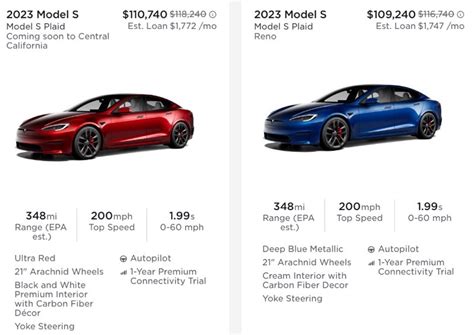
Cybertruck owners looking to trade in their futuristic vehicles are facing a harsh reality check, with reports indicating significant depreciation upon appraisal. Tesla has begun accepting Cybertruck trade-ins, revealing the financial impact early adopters are experiencing.
Tesla is now accepting Cybertruck trade-ins, providing owners with an exit strategy, but appraisal values are reportedly lower than many anticipated, highlighting the rapid depreciation of the vehicle. While some owners welcomed the opportunity to transition out of their Cybertruck, others expressed disappointment with the offered trade-in values. The reasons cited for this depreciation include high initial purchase prices, the novelty factor wearing off, and potentially, concerns about the vehicle’s polarizing design and usability in certain environments.
“Tesla is now accepting the Cybertruck on trade, opening up the possibility for owners to move on from the vehicle,” stated an article in Yahoo Finance. The move comes as a surprise to some industry analysts who had predicted Tesla might delay trade-ins to manage the Cybertruck’s resale value.
The depreciation rates are varying, but anecdotal evidence suggests losses ranging from $20,000 to $40,000 or more, depending on the configuration, mileage, and condition of the Cybertruck. This level of depreciation is considered substantial, particularly for a vehicle that has been on the market for a relatively short period. Factors such as the initial high demand which drove up prices in the secondary market, coupled with increased production and availability, are now contributing to the price decline.
The acceptance of Cybertruck trade-ins may signal a shift in Tesla’s strategy, possibly indicating an attempt to stabilize the Cybertruck’s position in the market. By controlling the resale process through trade-ins, Tesla can potentially manage the inventory of used Cybertrucks and influence pricing. However, it also presents a challenge for Tesla’s brand image, as high depreciation rates can impact consumer confidence in the vehicle’s long-term value.
Early adopters of the Cybertruck paid premiums to acquire the vehicle, often exceeding the Manufacturer’s Suggested Retail Price (MSRP). These premiums were fueled by high demand and limited availability in the initial launch phase. However, as production ramps up and more Cybertrucks enter the market, the supply-demand dynamics are shifting, leading to lower resale values.
The unique design of the Cybertruck, while initially a major selling point, may also be contributing to its depreciation. Its polarizing aesthetics and unconventional features appeal to a specific segment of the market, but may not resonate with a broader audience. This limited appeal can restrict the pool of potential buyers in the used car market, putting downward pressure on prices.
Concerns about the Cybertruck’s practicality and suitability for everyday use may also be influencing depreciation rates. Its large size and unconventional shape can make it challenging to maneuver in urban environments, and its stainless steel exterior, while durable, may be prone to scratches and dents that are difficult to repair. These factors can deter some buyers in the used car market, impacting the vehicle’s resale value.
The Cybertruck is available in multiple configurations, including single-motor rear-wheel drive, dual-motor all-wheel drive, and tri-motor all-wheel drive (Cyberbeast). The performance and range of each configuration vary, with the higher-end models offering faster acceleration and longer driving range. However, the higher-end models also command higher initial purchase prices, which can translate to greater depreciation in absolute dollar terms.
Tesla’s decision to accept Cybertruck trade-ins comes as the company faces increased competition in the electric vehicle market. Several new electric trucks and SUVs have been launched in recent years, offering consumers a wider range of choices. This increased competition can put pressure on the prices of all electric vehicles, including the Cybertruck.
Tesla’s financial performance and stock price can also be impacted by the depreciation of its vehicles. High depreciation rates can lead to lower resale values, which can affect consumer confidence in the brand and potentially reduce demand for new vehicles. This can have a negative impact on Tesla’s revenue and profitability.
The Cybertruck has faced production challenges since its initial unveiling in 2019. Delays in production have been attributed to various factors, including supply chain constraints, design changes, and manufacturing complexities. These delays have contributed to the vehicle’s high initial prices and limited availability, which have, in turn, affected its depreciation rates.
Tesla’s brand reputation and customer service are also factors that can influence the depreciation of its vehicles. While Tesla has a strong brand reputation for innovation and technology, it has also faced criticism for its customer service and quality control issues. Negative publicity surrounding these issues can erode consumer confidence and negatively impact resale values.
The long-term impact of Cybertruck depreciation on Tesla’s brand and financial performance remains to be seen. However, it is clear that the company faces challenges in managing the vehicle’s resale value and maintaining consumer confidence in its long-term investment. Tesla will need to address these challenges effectively in order to ensure the Cybertruck’s success in the market.
Several factors could mitigate the impact of Cybertruck depreciation in the future. If Tesla can successfully address production challenges and increase the availability of the vehicle, it could help to stabilize prices in the used car market. Improvements in customer service and quality control could also boost consumer confidence and improve resale values. Additionally, advancements in battery technology and charging infrastructure could enhance the Cybertruck’s appeal and make it a more desirable vehicle in the long term.
The automotive industry has seen significant shifts in recent years, with electric vehicles becoming increasingly popular. However, the depreciation rates of electric vehicles can vary widely depending on factors such as brand, model, and battery technology. Some electric vehicles have held their value relatively well, while others have experienced significant depreciation.
The Cybertruck’s depreciation rates are being closely watched by industry analysts and consumers alike. The vehicle’s unique design and unconventional features make it a subject of intense interest, and its resale value is seen as a key indicator of its long-term success in the market.
Tesla’s response to the Cybertruck’s depreciation will be crucial in shaping the vehicle’s future. The company will need to carefully manage its inventory of used Cybertrucks, adjust its pricing strategies, and address any concerns about the vehicle’s reliability and practicality. By taking these steps, Tesla can potentially mitigate the impact of depreciation and ensure the Cybertruck’s long-term viability.
The Cybertruck’s depreciation also has implications for the broader electric vehicle market. If the Cybertruck’s resale value continues to decline, it could discourage consumers from investing in electric vehicles in general. This could slow down the adoption of electric vehicles and hinder the transition to a more sustainable transportation system.
Tesla’s mission is to accelerate the world’s transition to sustainable energy. The Cybertruck is an important part of this mission, as it is designed to be a durable, versatile, and environmentally friendly vehicle. However, the Cybertruck’s depreciation poses a challenge to Tesla’s mission, as it could make the vehicle less accessible to consumers and reduce its overall impact on the environment.
Tesla’s leadership team is aware of the challenges facing the Cybertruck and is working to address them. The company is committed to improving the vehicle’s quality, reliability, and customer service. Tesla is also investing in battery technology and charging infrastructure to enhance the Cybertruck’s performance and appeal.
The Cybertruck’s future is uncertain, but Tesla remains optimistic about its potential. The company believes that the Cybertruck’s unique design, advanced technology, and environmental benefits will ultimately make it a successful vehicle in the long term.
The acceptance of Cybertruck trade-ins is a significant development in the vehicle’s history. It marks a new phase in the Cybertruck’s life cycle and presents both challenges and opportunities for Tesla. How Tesla navigates this phase will determine the Cybertruck’s ultimate success or failure.
The automotive industry is constantly evolving, and Tesla is at the forefront of this evolution. The Cybertruck is a bold and innovative vehicle that challenges traditional automotive norms. Its depreciation is a reminder that even the most groundbreaking vehicles can face challenges in the market.
Tesla’s ability to overcome these challenges will be a test of its leadership, innovation, and customer service. The Cybertruck’s future depends on Tesla’s ability to adapt to changing market conditions and meet the needs of its customers.
The Cybertruck’s depreciation is a complex issue with multiple contributing factors. It is not simply a reflection of the vehicle’s quality or performance. It is also influenced by market dynamics, consumer sentiment, and Tesla’s own actions.
Tesla’s success in the electric vehicle market has been driven by its ability to innovate and disrupt traditional automotive norms. The Cybertruck is a prime example of this innovation. However, innovation also comes with risks, and the Cybertruck’s depreciation is a reminder of these risks.
Tesla’s leadership team is well aware of the challenges and opportunities facing the company. They are committed to addressing these challenges and capitalizing on the opportunities. The Cybertruck is an important part of Tesla’s future, and the company is determined to make it a success.
The Cybertruck’s depreciation is a topic of much discussion among industry analysts and consumers alike. There are many different opinions on the reasons for the depreciation and its potential impact on Tesla.
Tesla’s own perspective on the Cybertruck’s depreciation is likely to be different from that of industry analysts or consumers. Tesla may view the depreciation as a temporary phenomenon or as a necessary adjustment to market conditions.
Regardless of Tesla’s perspective, the Cybertruck’s depreciation is a reality that the company must address. Tesla’s response to this challenge will be closely watched by the industry and the public.
The Cybertruck’s depreciation is a reminder that the automotive industry is a dynamic and competitive environment. Companies must constantly adapt to changing market conditions and meet the needs of their customers in order to succeed.
Tesla has a proven track record of innovation and disruption. The Cybertruck is a testament to this innovation. However, innovation is not always easy, and it requires a willingness to take risks and learn from mistakes.
Tesla’s leadership team is committed to making the Cybertruck a success. They are confident that the vehicle’s unique design, advanced technology, and environmental benefits will ultimately make it a desirable vehicle in the long term.
The Cybertruck’s depreciation is a challenge, but it is also an opportunity for Tesla to demonstrate its resilience and innovation. Tesla’s ability to overcome this challenge will be a key factor in its future success.
The automotive industry is undergoing a major transformation, with electric vehicles becoming increasingly popular. Tesla is at the forefront of this transformation, and the Cybertruck is an important part of its strategy.
The Cybertruck’s depreciation is a reminder that the transition to electric vehicles is not without its challenges. However, Tesla is committed to overcoming these challenges and accelerating the world’s transition to sustainable energy.
The Cybertruck’s depreciation is a complex issue with no easy solutions. However, Tesla’s leadership team is confident that they can navigate this challenge and make the Cybertruck a success.
The Cybertruck’s depreciation is a topic that will continue to be discussed and debated in the coming months and years. Tesla’s response to this challenge will be closely watched by the industry and the public.
The Cybertruck is a unique and innovative vehicle that has the potential to transform the automotive industry. Its depreciation is a challenge, but it is also an opportunity for Tesla to demonstrate its leadership and innovation.
The Cybertruck’s depreciation is a reminder that the automotive industry is constantly evolving. Companies must be willing to adapt to changing market conditions and meet the needs of their customers in order to succeed.
Tesla is committed to making the Cybertruck a success. The company believes that the vehicle’s unique design, advanced technology, and environmental benefits will ultimately make it a desirable vehicle in the long term.
Frequently Asked Questions (FAQ) about Cybertruck Trade-Ins and Depreciation:
1. Why are Cybertruck owners seeing such high depreciation when trading in their vehicles?
Several factors contribute to the Cybertruck’s depreciation. Firstly, many early adopters paid premiums above the Manufacturer’s Suggested Retail Price (MSRP) due to initial high demand and limited availability. As production increases, supply meets demand, reducing resale values. Secondly, the Cybertruck’s unique and polarizing design may limit its appeal to a broader used car market, restricting potential buyers and lowering prices. Thirdly, concerns about the vehicle’s practicality in urban environments and potential repair costs for its stainless steel exterior may also deter some buyers. The increase competition in the EV truck market also contributes.
2. What is the typical depreciation amount that Cybertruck owners are experiencing?
While depreciation rates vary based on configuration, mileage, and condition, anecdotal evidence suggests losses ranging from $20,000 to $40,000 or more. This represents a significant percentage of the initial purchase price, especially for early adopters who paid premiums.
3. How does Tesla accepting trade-ins affect the Cybertruck’s resale market?
Tesla accepting Cybertruck trade-ins allows them to manage the resale process and potentially control the inventory of used Cybertrucks. This could stabilize pricing to some extent. However, it also presents a challenge for Tesla’s brand image, as high depreciation rates can impact consumer confidence in the vehicle’s long-term value.
4. Will the depreciation of the Cybertruck affect Tesla’s overall financial performance and stock price?
Potentially, yes. High depreciation rates can lead to lower resale values, which can affect consumer confidence in the brand and potentially reduce demand for new vehicles. This can have a negative impact on Tesla’s revenue and profitability, which in turn could affect their stock price.
5. What can Tesla do to mitigate the depreciation of the Cybertruck in the future?
To mitigate depreciation, Tesla could focus on several strategies. These include increasing production to meet demand, addressing concerns about the vehicle’s practicality and repair costs, enhancing customer service, improving the vehicle’s range and capabilities through technology upgrades, and potentially offering incentives or guarantees to protect resale value. Successfully addressing production challenges and improving customer satisfaction could significantly stabilize prices in the used car market.









